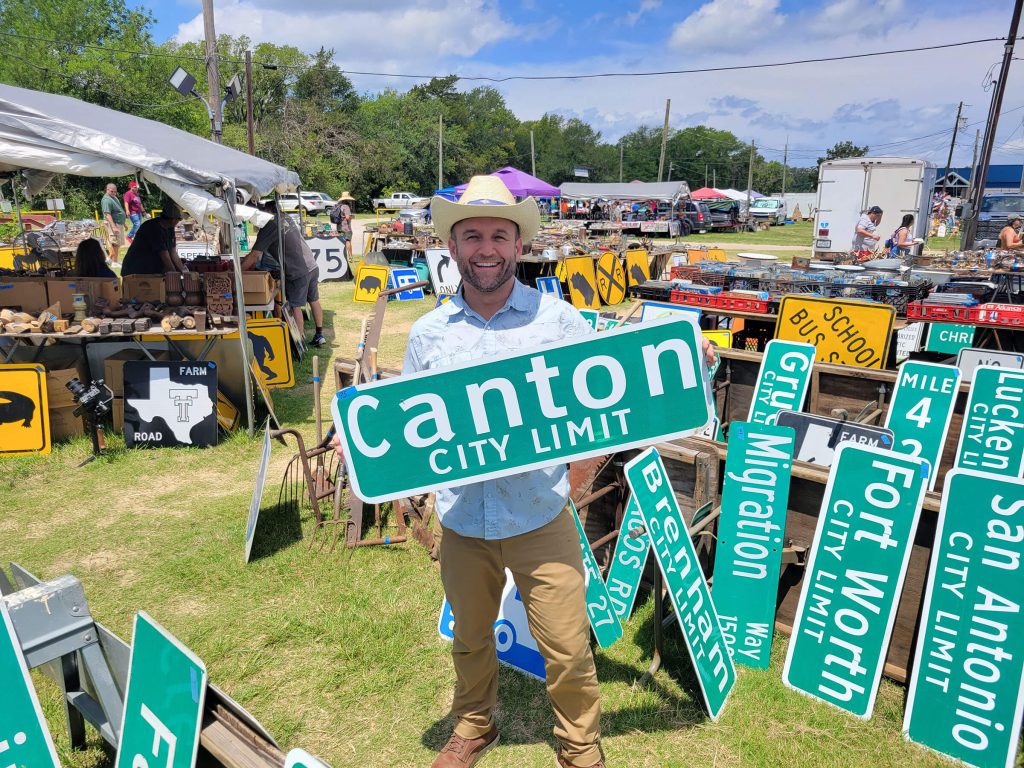ick-
Me-
U
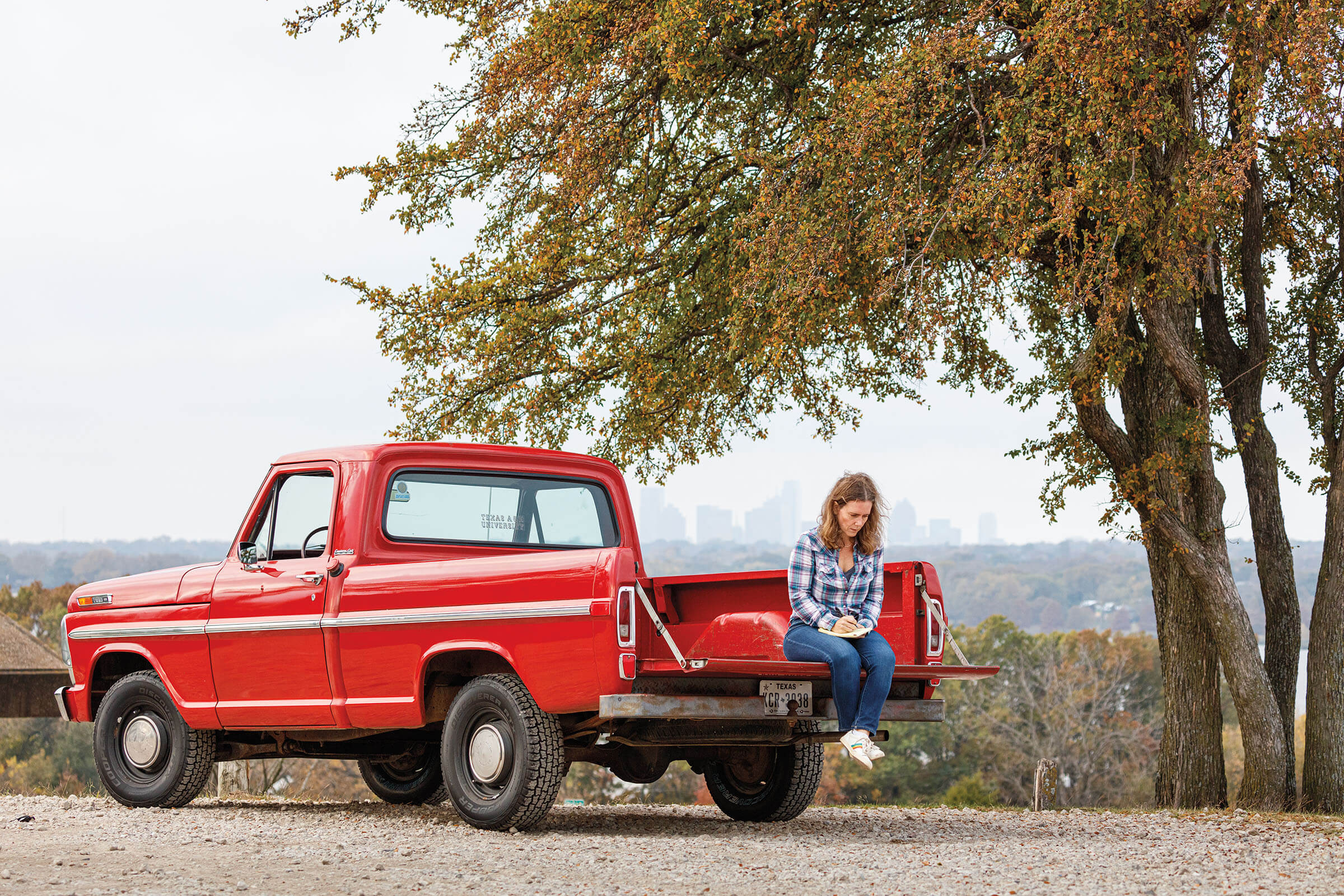
The evolution of the pickup truck, Texans’ vehicle of choice for generations
I’m barreling down Interstate 35 in Dallas, in a Chevy Silverado, and I can’t stop noticing how the cars yield to me. I never realized how small and squashable I was in my two-door sedan until I slid behind the wheel of a half-ton pickup. It was so mighty the tires rose past my hips and I had to hoist myself into the driver’s side using a handlebar above the door, which felt a bit too much like scrambling up the side of a mountain. But once I was seated, my view was so vast I felt like I was commanding a great cavalry.
At the drive-thru, the woman actually clapped as I sidled up to her window. “One of my girlfriends just got that truck,” she told me, running her eyes along the Silverado like we might just punch a hole in the glass ceiling. “You are gonna go everywhere,” she told me, and I drove away feeling like I just might.
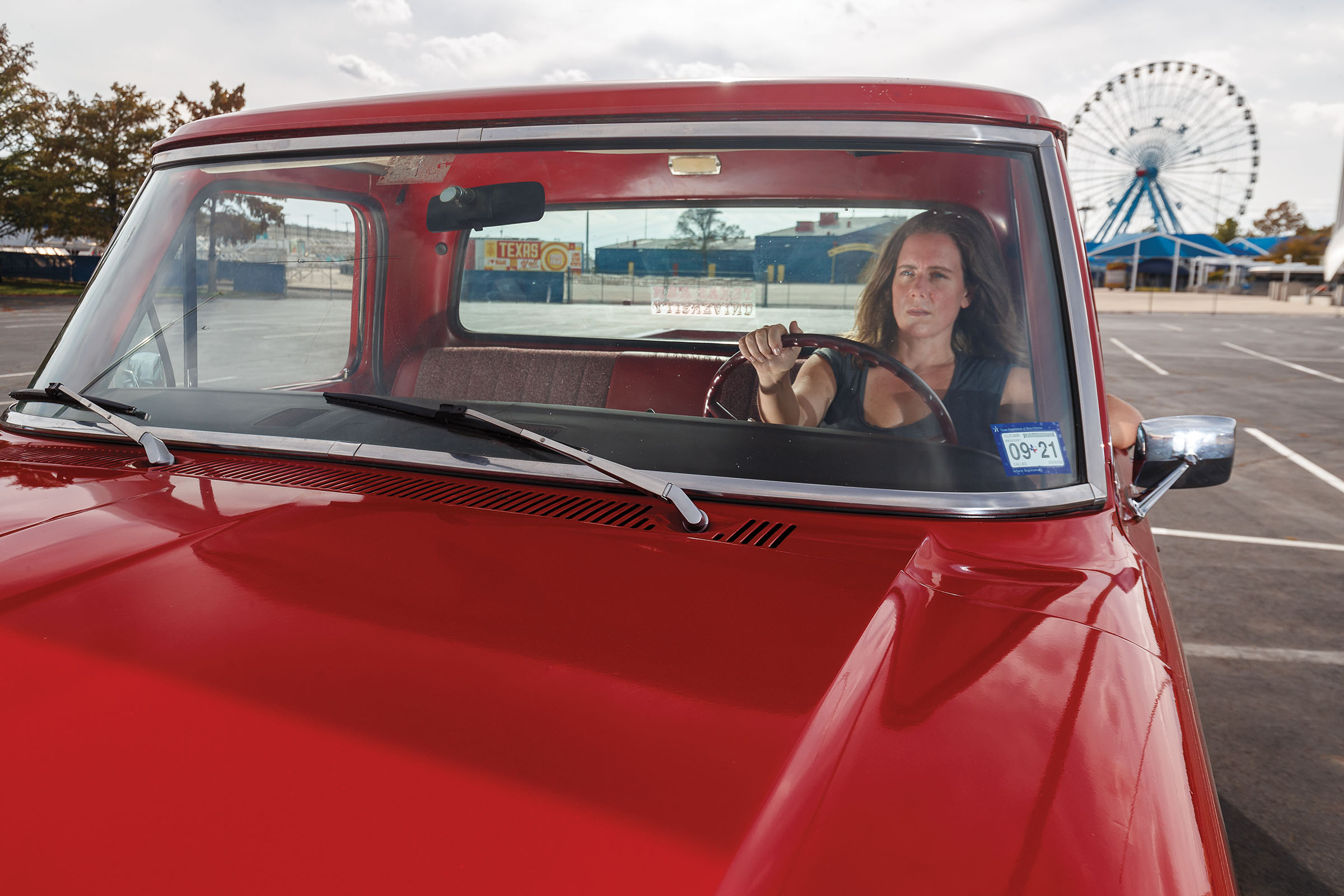
When I first heard about this “car culture” issue, I knew what I wanted to write: an ode to my Honda Accord, which I’d driven across the country a half-dozen times. For 20 years, I’ve only ever owned a Honda sedan—one after the other, like a woman who keeps marrying and divorcing the same man. I think of those cars as trusty, no-drama companions that have carried me across fearsome interstates and rambling backroads. And my editor liked the pitch, but he had one small adjustment: Could I write about pickup trucks instead?
But I’d never driven a truck, I started to respond, but then I realized that was the point. As luck would have it, the photographer for this story has a 1969 red Ford pickup, and there are countless dealerships in the DFW area for test-driving the latest models.
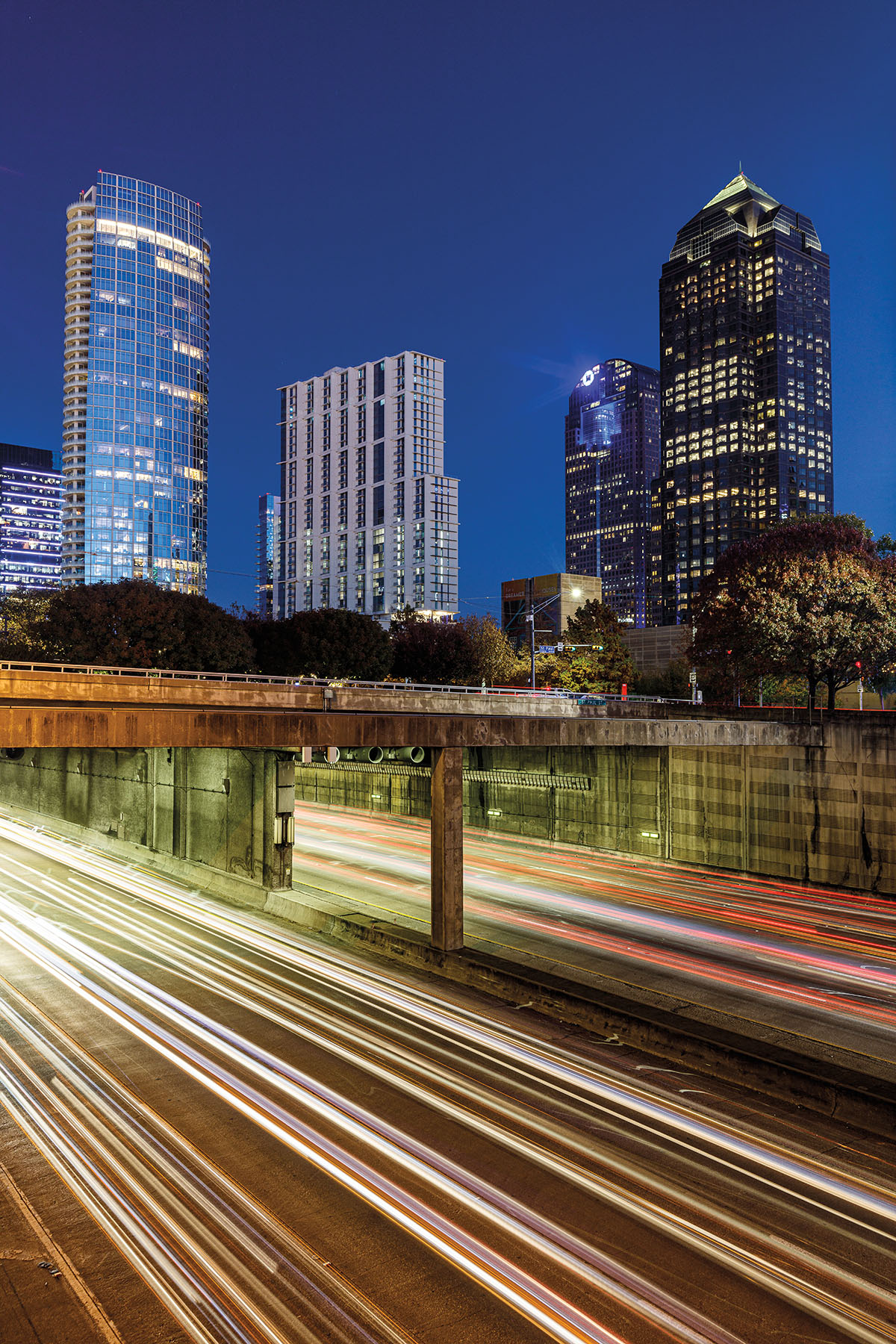
Dallas’ “spaghetti bowl of freeways”
To spend decades cruising across Texas yet never slide behind the sturdy wheel of a big ol’ pickup shows a certain defiance on my part. It’s like not watching football, not listening to country music, or not wearing cowboy boots, all of which are check, check, check for me. Part of my rebellion was to shape myself in counter-formation to Texas stereotypes. You could also say I was a new breed—a city girl pampered by modern conveniences, more familiar with grazing the sales rack at Dillard’s than horses grazing the open prairies. I once showed up to a working farm in a skirt and platform flip-flops, which is not very Texan but is painfully Dallas.
I should have known better: No one escapes trucks in Texas. One out of every four cars sold in the state is a pickup. That speaks to our rugged terrain but also to our machismo. Drive a mile down a country road, the fusillade of gravel pegging your undercarriage, and you will understand why so many rural folks drive pickups. But most Texans live in cities, where trucks are also popular. Perhaps this is a longing for a bygone era, an assertion of manhood at a time when men’s roles are changing. But it might also be an adaptation—a vehicle once needed to work the land repurposed for tailgating, weekend outings, and carpooling. As our state has changed, our trucks have changed, too, evolving into family sedans with opulent interiors, even as they keep their original status as the no-frills work vehicle of the lone wolf.
My only choice was to learn to live alongside the Goliaths. Their shiny metal grilles flickered in my rearview mirror like bared teeth, snarling. In parking lots and cramped garages, I ducked nervously around them, accommodating their girth, grumbling as they manspread across compact car spaces. Women buy between 15% and 20% of trucks (that’s my best guess, anyway, based on limited data and conversations with dealers), but a truck is considered a man’s car.
A few times, I found myself dating a guy who drove one. I still think fondly of a dashing cowboy who kissed me on the curb and double-tapped the key fob to his black pickup, making the engine roar to life. I looked at him like he was Fonzie, though perhaps John Wayne is the better reference point. Then he rode off into the sunset, and I never got my lasso around him again. Cowboys, ugh. Just because you don’t like Texas clichés doesn’t mean you won’t fall for one.
It was my turn to take the wheel. My first stop was the Chrysler dealership near Love Field airport, home of the Ram pickup (formerly the Dodge Ram). This line is generally mentioned third in the triumvirate that includes Ford (first) and Chevy (second), but the Ram has been swiftly gaining ground. I opened the door of a shiny Ram 1500 Limited and an automated step lowered to ease my entry, like I was boarding a plane out on the tarmac.
I wondered if my salesman, LD Upton, a tall swaggering man with gray hair at his temples, could see my hands trembling as I nudged the vehicle into the slipstream of early rush-hour traffic. The ride was smooth, like I was gliding, but I struggled to get a sense of the perimeter of my vehicle. I had an uneasy feeling, like I was wearing an enormous hoop skirt.
“Give it some gas,” LD said, as I turned onto a straightaway. Gearheads rave about the Ram’s Hemi engine, and I barely touched the pedal before we hit 40 mph. LD took the wheel on our next outing, in a massive 3500 with dually tires. He punched that baby to 60 so fast, I actually clutched my chest.
“You can do a lot of things in a truck,” he told me, when I asked him why Texans love pickups. People often speak of utility when riffing on the truck’s appeal, noting it could haul lumber as well as bags from a shopping spree at Target, but LD was speaking to the driving experience. Dominance. Mastery of the road. “You can go across a median when you’re stuck in traffic. Water, mud, anything. There’s a sense of, ‘I can do this, and you can’t.’”
Of course, that phrase points to a noxious strain in a particular truck owner’s mentality, one that could lead to droning exhausts, needless lifts, and drivers cutting you off in traffic. Bravado is one reason some people can’t stand trucks, and Texans for that matter, but I have to admit something delicious in the brag: I thought of all the times I’d watched as a pickup bailed on a long traffic snarl to escape across a grassy incline, an animal running free—albeit with a hefty fine to pay if busted.
Size comes with downsides, though, as any truck driver attempting a tricky parking spot or filling up the gas tank knows. Trucks aren’t exactly fuel efficient, but they’ve come a long way, managing about 18-25 mpg on the highway in newer models, and they’re outfitted with cameras and safety features that can make parking as carefully monitored as a command center docking a spaceship. Ever since I began researching this story, YouTube has been feeding me a Ford ad where a carefree single woman uses the enhanced parking-assist mode to parallel park her truck on a city street, which apparently was such a snap she never stopped chatting with the friend beside her.
My next stop was Ford—where trucks began. Back in the 1920s, Henry Ford noticed folks were ripping out the back seats of their Model Ts and replacing them with cargo boxes. He took the hint, and by 1925 he was the first to start mass-manufacturing trucks. Nearly a century later, the Ford F-150 is the most popular car in Texas. With seven trim levels, everyone from dirt-smeared construction workers to affluent suburbanites has embraced the F-150.
“Comfort level is key,” said my salesman, Ranger Oppert, at Town East Ford in Mesquite. Ranger has a nose guard’s build, a sturdy 6’2”. He slid into the front seat of the F-150 and moved his elbows around to demonstrate the spaciousness of the cab. Then he moved to the back seat to prove how much room even the person stuck behind the driver had.
Trucks keep getting bigger in part because we do. Americans are heavier and taller than our poor Flamin’ Hot Cheetos-deprived, Model T-driving Dust Bowl ancestors. The truck has become like a suit that can flatter any body type: It makes the big person feel small, the small person feel big. As a woman who stands 5’2”, I’ve spent a lifetime craning my neck to look up at people, so I liked looking down as I rolled along the asphalt in the mighty King Ranch edition of the F-150. Designed in partnership with the famous 825,000-acre ranch in Kingsville, the luxury model has buttery leather seats and a moon roof with a panoramic view. It’s a country spa on wheels.
“Watch this,” Ranger said. He pressed a button, and knobs began kneading my back and (whoa) upper thighs. A massage chair! I was waiting for this thing to do my taxes and tuck me in at night.
“You can do a lot of things in a truck. You can go across a median when you’re stuck in traffic. Water, mud, anything. There’s a sense of, ‘I can do this, and you can’t.’”
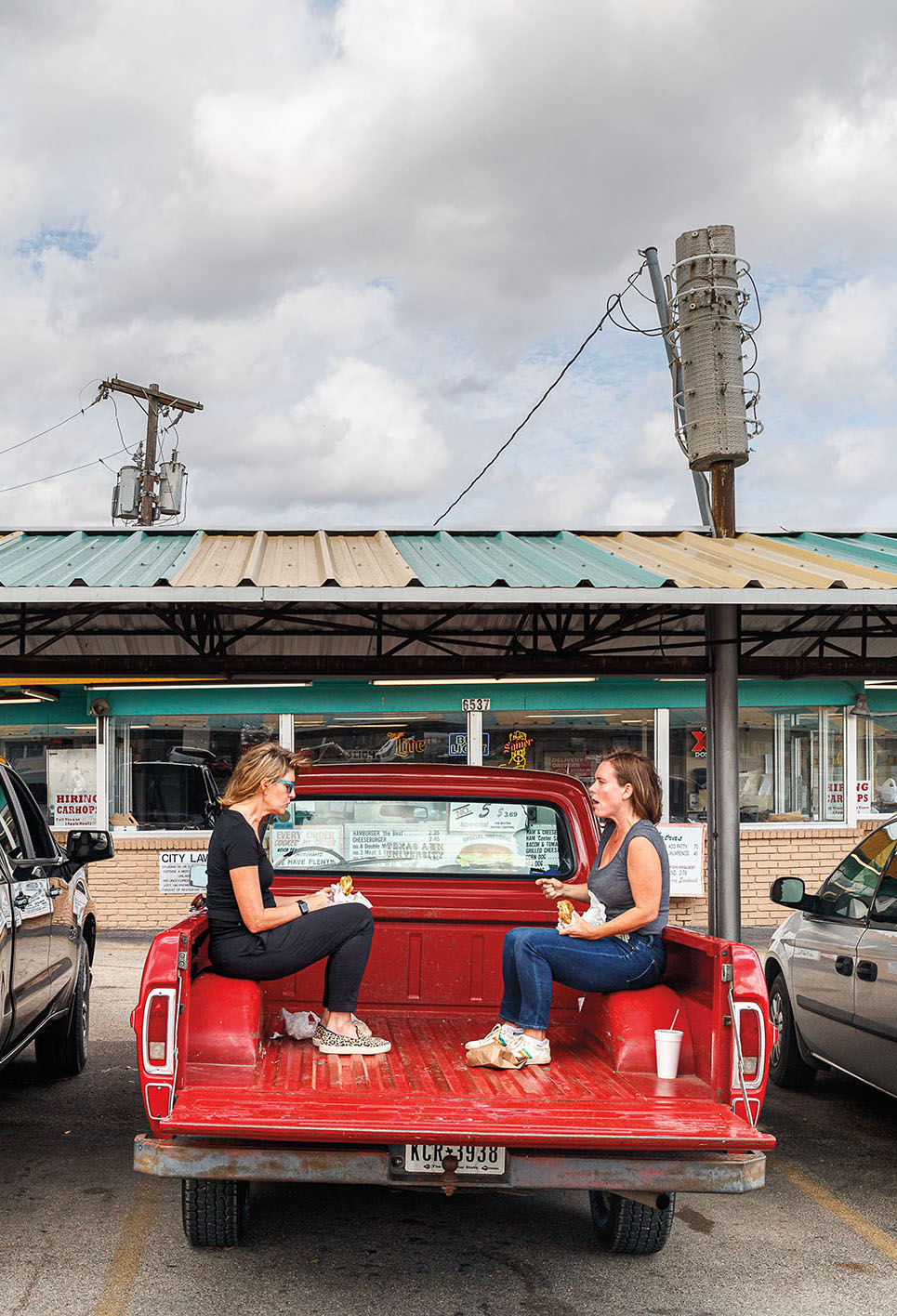
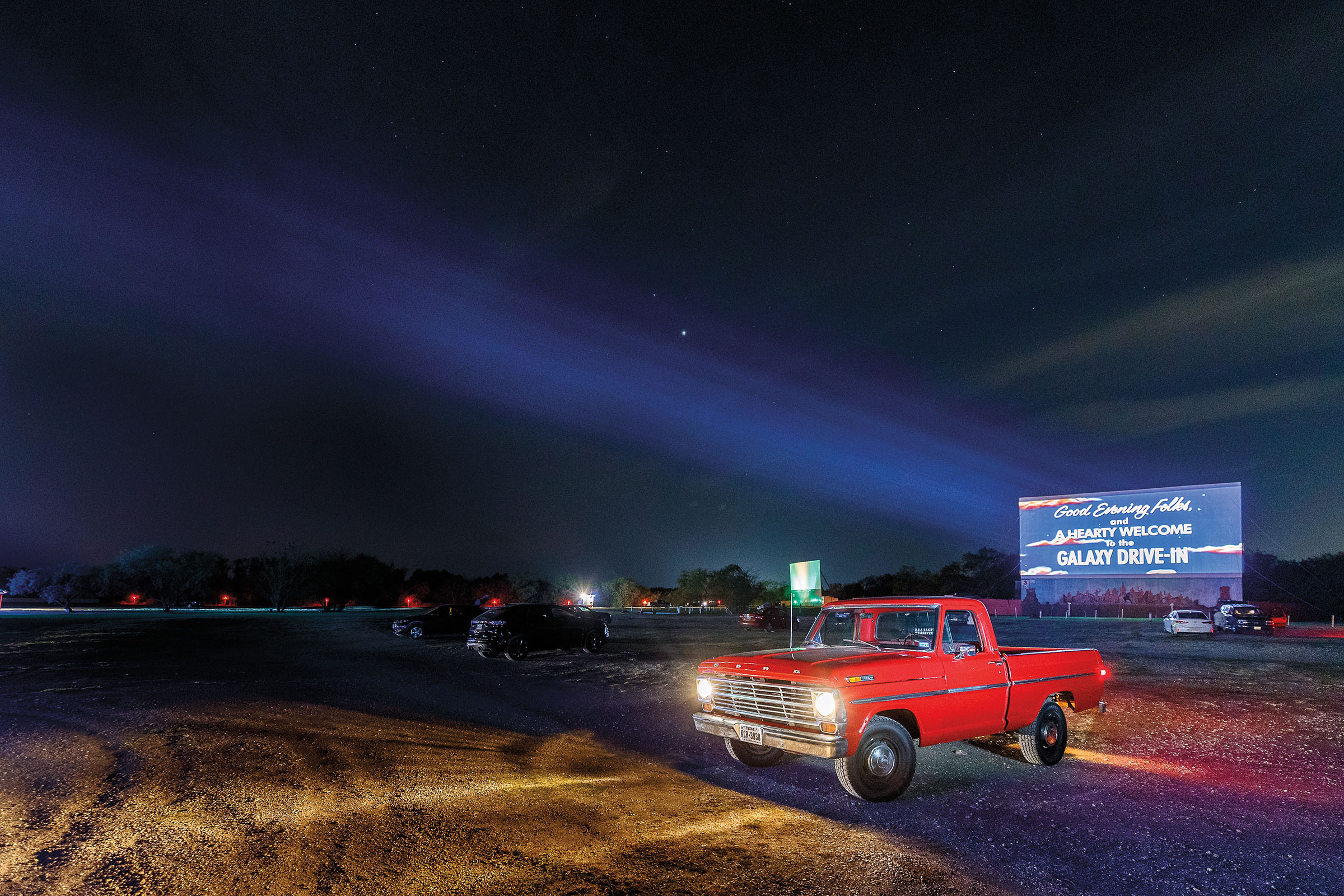
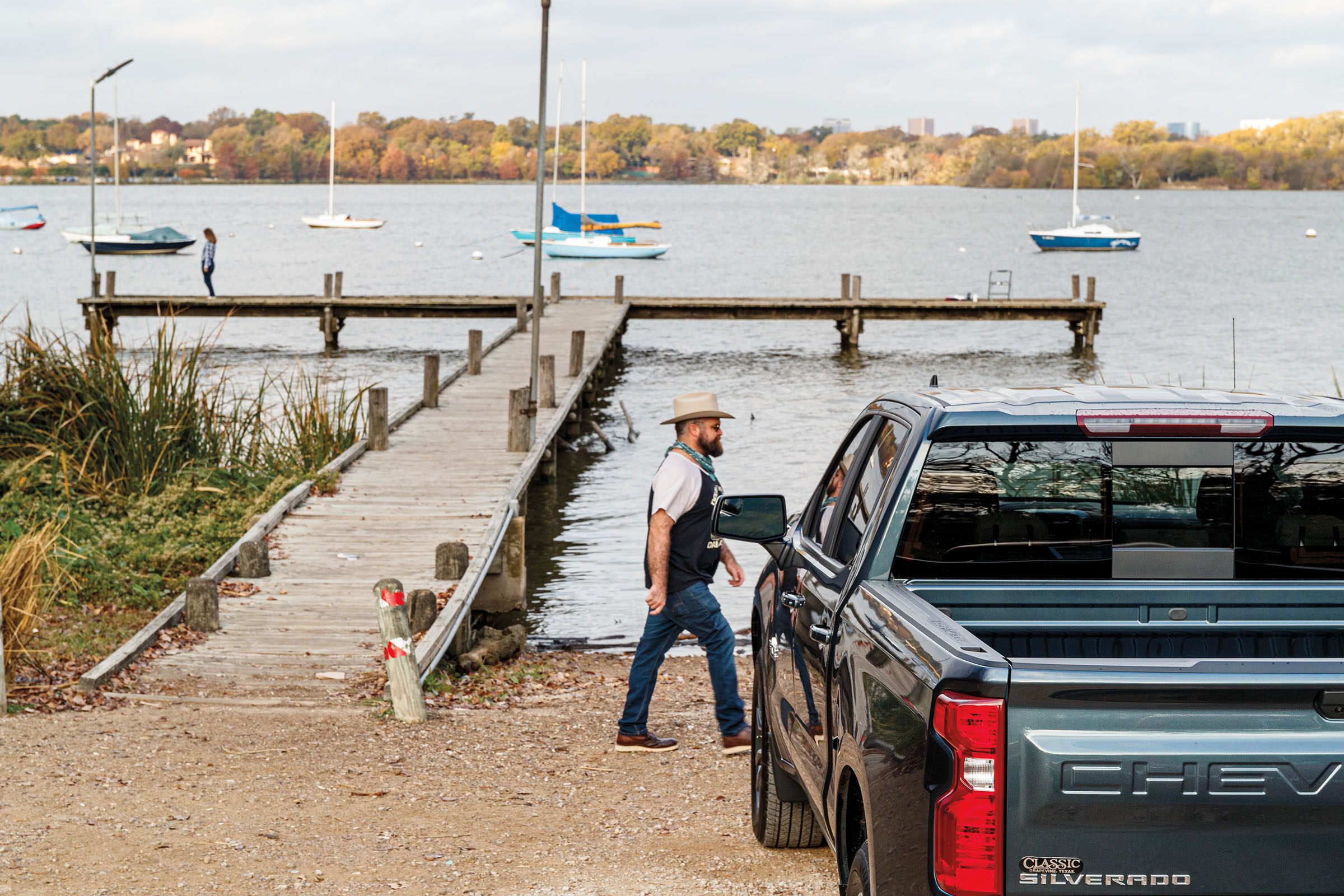
Trucks have gotten so sophisticated; before we know it, they’ll be driving themselves. It’s hard to imagine what a rustic, hard-bouncing ride a truck used to be. That’s where photographer Sean Fitzgerald’s red Ford pickup came into play. It was so eye-catching, so romantically evocative of Old Hollywood, that sliding into the front seat one morning made me feel like Paul Newman in Hud. Except for the part where I had no idea how to drive stick.
I stared at the confounding driver’s panel, whose dials resembled an antique radio—such a change from the touch screens and digital displays I’d seen over the past week. This was deep analog. We were in the parking lot of Fair Park, nothing around us but shuttered ticket booths and an empty Ferris wheel. I placed my hands at 10 and 2 on the wheel and took a deep breath. The smell reminded me of a box of crayons.
“You can’t break this thing,” Sean assured me, patting the bench seat, which gave a rusty squeak. I turned the ignition and the truck immediately stalled. It took a few tries to get moving. The dance of clutch, gas, and ignition was confusing to feet unaccustomed to a third pedal. But it wasn’t long before I was cruising in wide circles around the asphalt, moving the gear down to second as I engaged the clutch, then up to third, only once pitching us forward. I liked how driving stick engaged me with the machine. I had to listen for the engine’s hum and groan, notice the shudder, and adjust accordingly.
The story of automation is about humans doing less and accomplishing more, which is wonderful. But sometimes we forget the thrill that can be found in doing more and accomplishing less. Staying present and fully engaged. I can see why some people prefer this way of driving; it gives you a feeling of control, like you’re the one turning the gears.
Alas, it was too much truck for me. I was happy to hop back into my Silverado and start the engine with the press of a button. I’d been driving the loaner for a few days, thanks to the brave folks at Classic Chevrolet in Grapevine. The Silverado was the only truck that felt like home to me. I had developed a habit of stroking my hand along its side body whenever I parted, like I was giving it a kiss goodbye. The color was lovely, a shimmering dark gray with whispers of blue—not too fancy, not too brawny. I think what endeared me the most was the pleasure of getting to drive it. I had never believed I could handle a truck, until I maneuvered that beauty off the lot. And then, like the woman at the drive-thru predicted: I went everywhere.
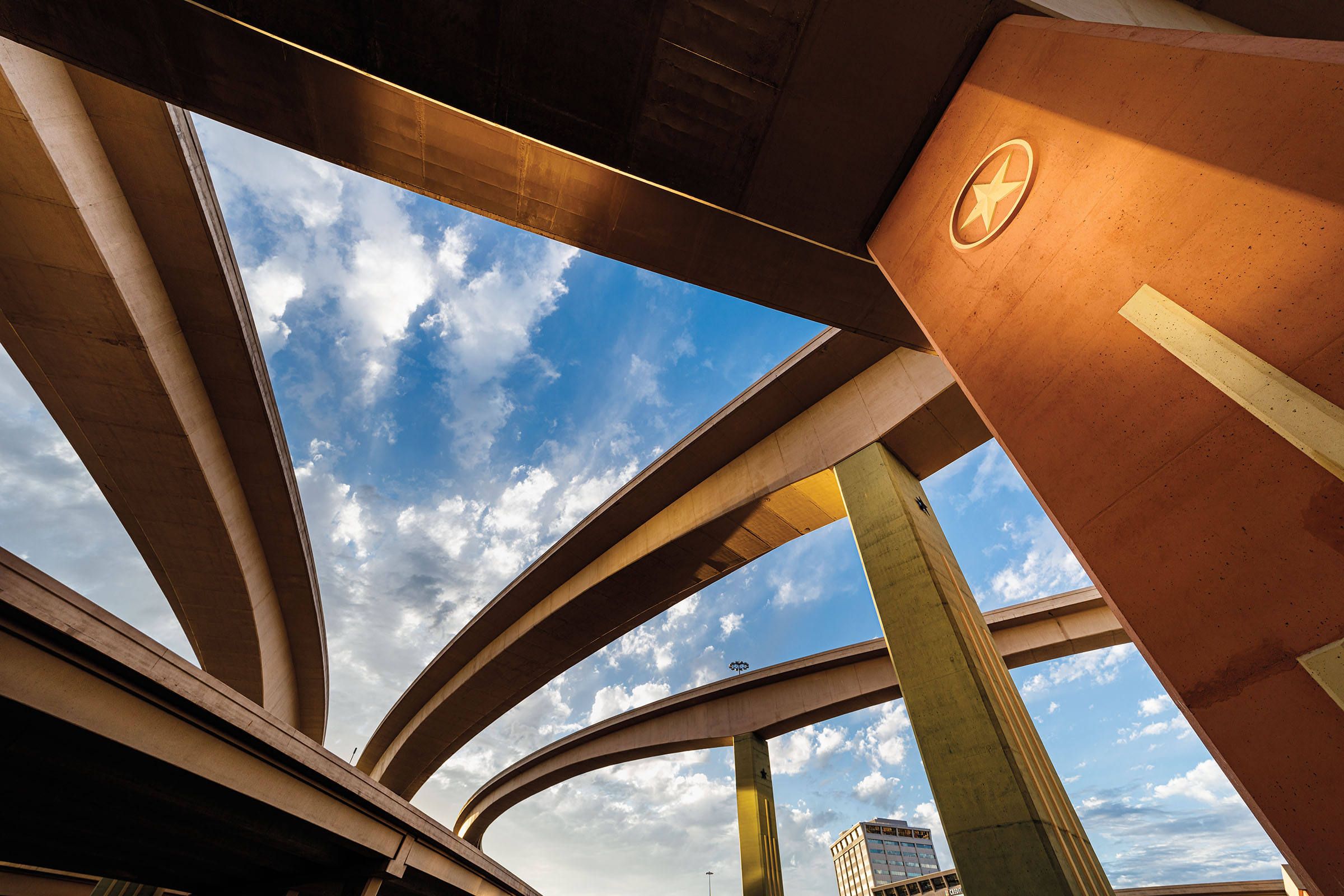
A view from the High Five Interchange.
I drove through the spaghetti bowl of freeways near the airport, where I felt like a lion on the savanna. I drove on country roads south of town, in the Blackland Prairie, where clouds of dust trailed behind me like I was filming a car commercial. I drove to the Galaxy Drive-In movie theater in Ennis, where I was less interested in the movie playing than in the novel experience of rambling up to the screen and popping open the tailgate so I could drag a lawn chair into the bed of the truck and stare at the projected image. Also, stars!
Maybe the appeal of trucks is that you don’t have to choose between town and country, work and play, driving a family car or the vehicle of a restless wanderer. Trucks are for everyone, every situation. Still, in a competition for resources, they sure can take up more than their fair share.
“Clucking trucks!” one cyclist spat at me as I nosed around White Rock Lake one blue-sky morning. (He did not say “clucking.”) I got it—I once felt the same. I wanted to tell him I was only doing this for a story and that I was being careful and would never hurt him. But the truth is that city living and rural roots make for an uneasy mix, and comfort for one person can feel like peril to the other. I suppose part of my truck initiation was to absorb this anger. Nevertheless, I headed out of White Rock Lake right after because in the fight between earth and machine, between old modes of travel and new—we can agree this was the cyclist’s turf.
I drove across gravel roads. I drove through downtown tunnels. I drove in a deserted parking lot. I even ran over a curb—just because I could. Kacey Musgraves was playing as the wind whipped my hair. Turns out a kid who grew up hating country music can learn to love it. Go on ride away in your Silverado, sang the Mineola songbird in “Space Cowboy,” a lonesome tune about losing a man she once loved. But the world is changing, and so is Texas. This time, the one riding into the sunset was me.



